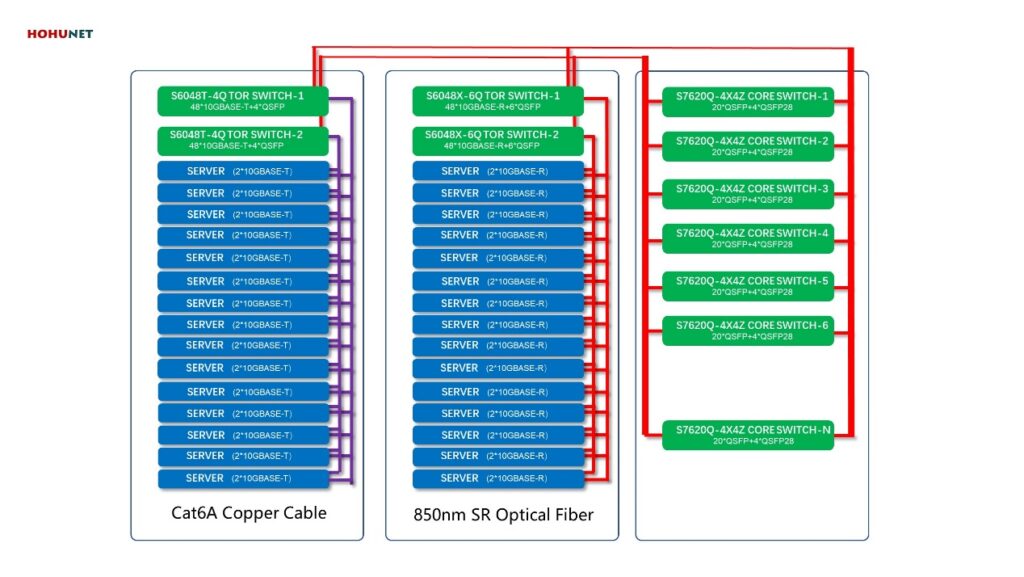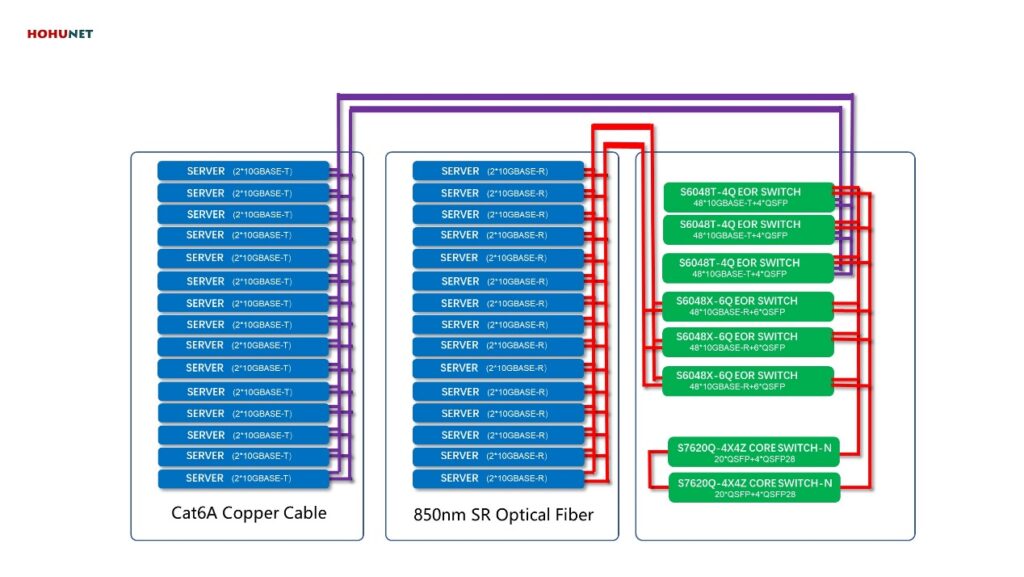Brochure
Download our document to see specific data of the service and how we work.
Let’s Start Work
Together
Please feel free to contact us. We will get back to you with 1-2 business days.
Data Center Architecture Designs Comparison: ToR Vs. EoR
The interconnection of switches and warranty of data communication are the basic aspects to consider when designing a data center architecture. Today’s data centers have been shifted into 1RU and 2RU appliances, thus setting the 1RU and 2RU switches into the same-sized racks can greatly save space and reduce cabling demands. Typically, Top of Rack (ToR) and End of Row (EoR) are now the common infrastructure designs for data centers. In this article, we will mainly discuss the differences between these two approaches.

Overview of ToR & EoR
What Is ToR?
ToR approach refers to the physical placement of network access switch in the top of a server rack. Servers are directly linked to the access switch in this method. Each server rack usually has one or two access switches. Then all the access switches are connected with the aggregation switch located in the rack. Only a small amount of cables are needed to run from server rack to aggregation rack.

What Is EoR?
In the EoR architecture, each server in individual racks are directly linked to a aggregation switch eliminating the use of individual switches in each rack. It reduces the number of network devices and improves the port utilization of the network. However, a large amount of cables is needed for the horizontal cabling. Along with the EoR approach, there is also a variant model named as MoR (Middle of Row). The major differences are that the switches are placed in the middle of the row and cable length is reduced.

Comparison Between ToR & EoR
Benefits
As for ToR, the cost of cables are reduced since all server connections are terminated to its own rack and less cables are installed between the server and network racks. Cable management is also easier with less cables involved. Technicians can also add or remove cables in a simpler way.
In the EoR, device count is decreased because not every rack should equip the switches. Thus, less rack space is required in the architecture. With less devices in data center, there will be less requirements for the cooling system which also reduces the using of electricity power.
Limitations
In reverse, there are also some limitations for each architecture. For ToR, although the cables are reduced, the number of racks is still increased. The management of switches may be a little tricky. In addition, ToR approach takes up more rack space for the installation of switches.
As for EoR, its Layer 2 traffic efficiency is lower than the ToR. Because when two servers in the same rack and VLAN (virtual local area network) need to talk to each other, the traffic will go to the aggregation switch first before comes back. As less switches are used in EoR design, more cables are deployed between racks triggering higher possibility of cable mess. Skillful technicians are required when carrying out the cable management.
Data center TOR and EOR solutions based on HOHUNET Switches
HOHUNET TOR Solutions
HOHUNET EOR Solutions
summary
Whether the user deploys the data center network using TOR or EOR, the HOHUNET switch can satisfy the user’s needs very well, which is confirmed by many practical cases.


